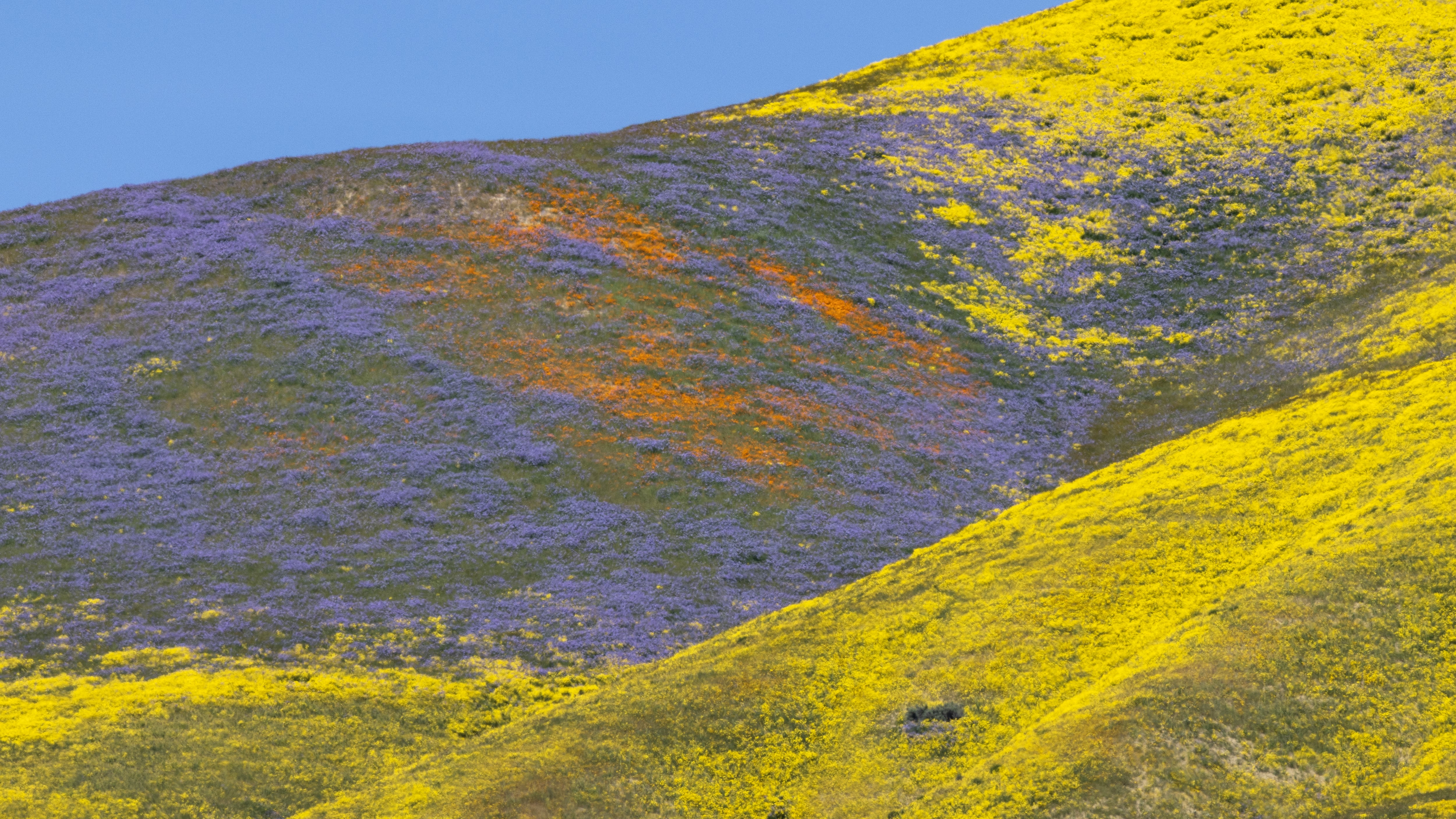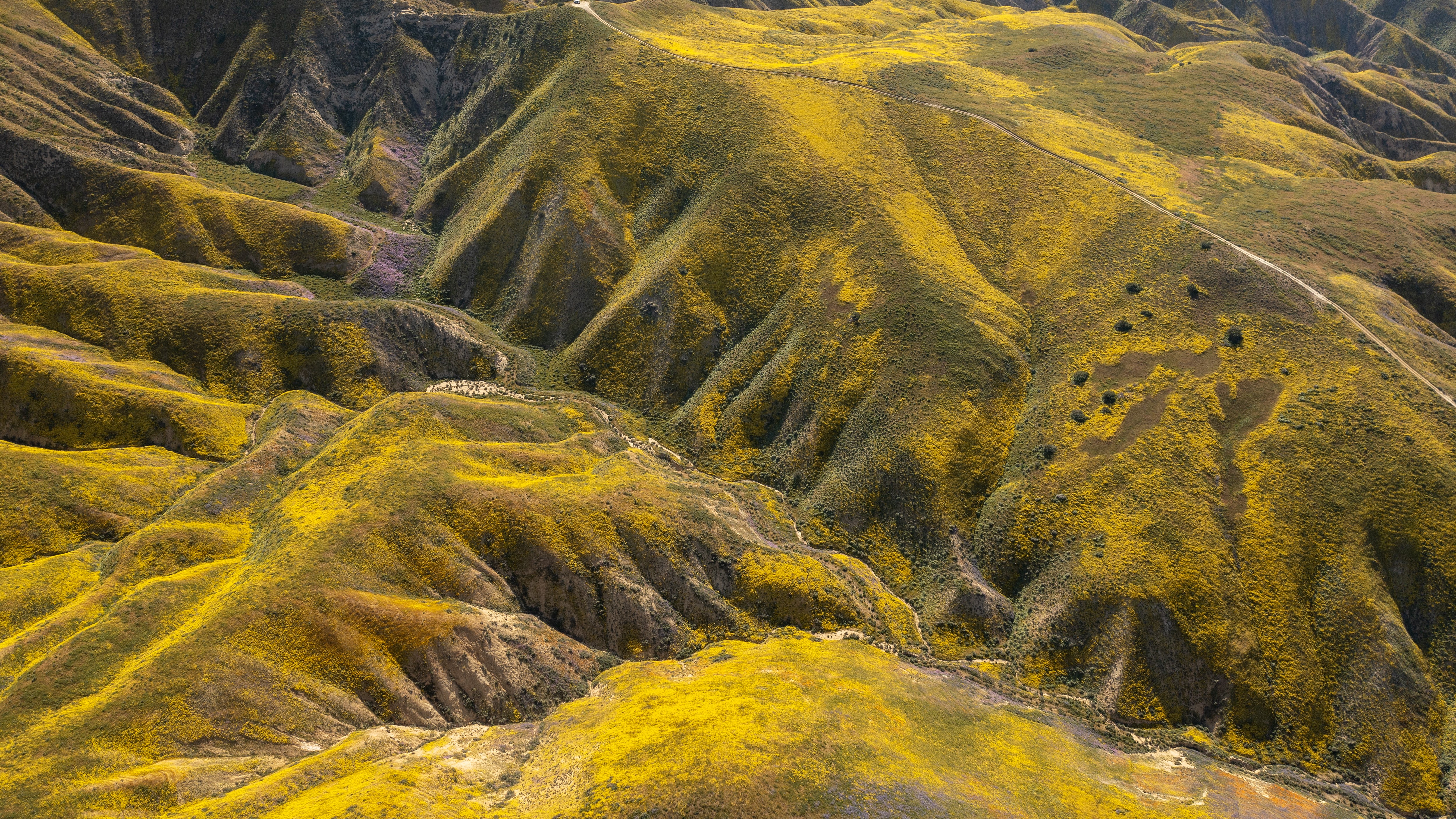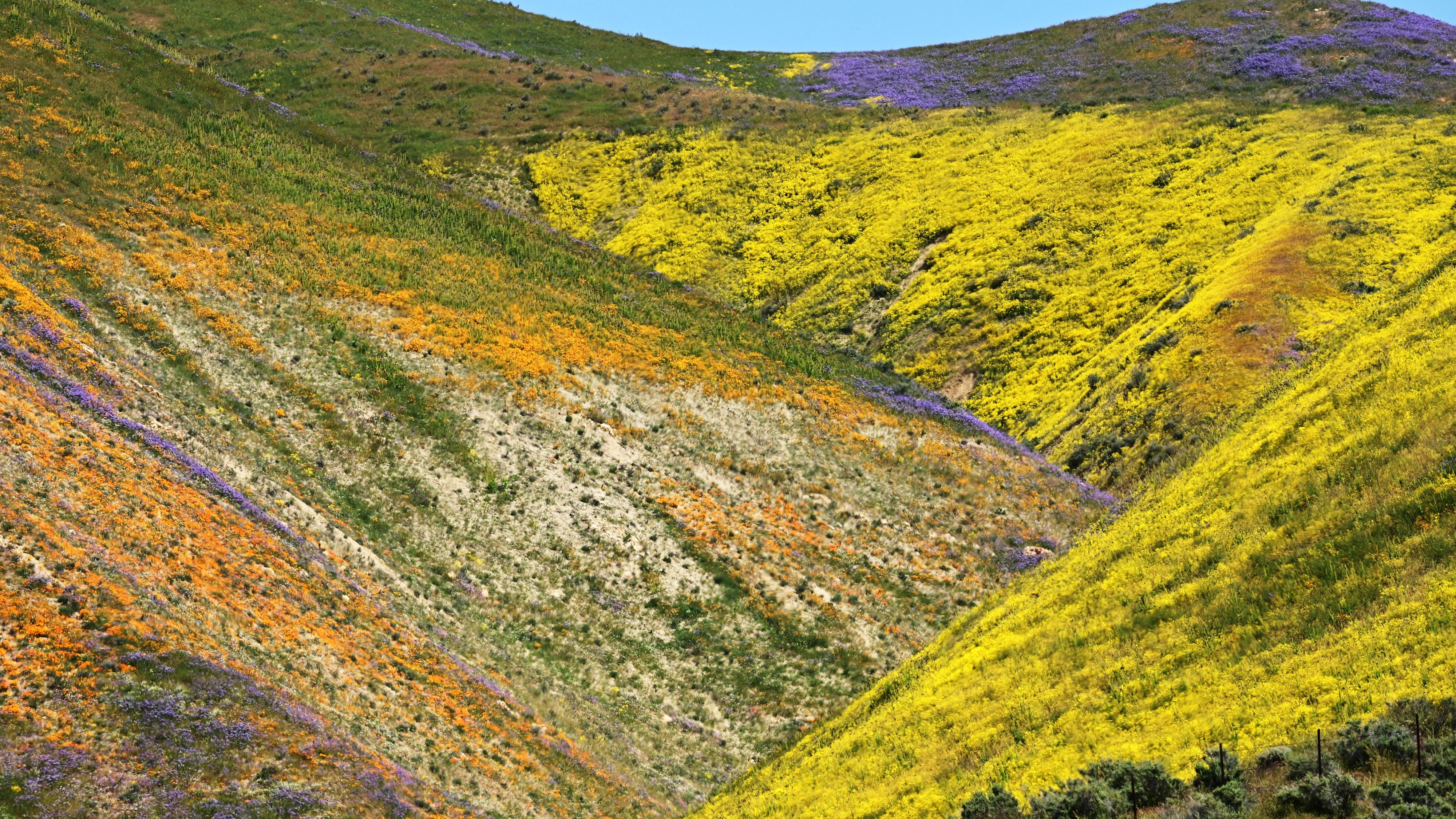What is a super bloom – and how can you see one responsibly?
Though southwestern deserts may appear to be barren places, they are in fact teeming with life

Every February, a murmur begins to ripple through the community of botanists, National Park-goers and nature lovers – will this be a superbloom year? Though desert landscapes carpeted in brilliant blooms of yellow and purple have no doubt always been something to write home about, the advent of social media has only fueled the desire to witness this botanical phenomenon. But what causes a superbloom, anyway? Where can you see one – and how can you do it responsibly?
What causes a super bloom?
Wildflowers in a desert aren’t that unusual – take Saguaro and Joshua Tree National Parks’ flowering cacti, for example. The appearance of desert flowers is only called a superbloom when an unusually large amount of wildflowers blossom at the same time, and this is quite rare. Superblooms largely take place in the southwestern deserts of California and occasionally Nevada in the US as well as on the west coast of South Africa. The superbloom in Death Valley National Park is one of the most famous, drawing hikers and photographers from around the globe.
Though southwestern deserts may appear to be barren places, they are in fact teeming with life and the seeds required for a superbloom are ever-present in the soil, just waiting to be activated. There are a very specific set of conditions that must be in place in order for a superbloom to occur, however.

For starters, there must be a rainier than average winter in areas that are normally arid, and that rain must penetrate the soil deep enough to awaken dormant seeds. In these fragile and sensitive desert ecosystems, it’s also vital that there isn’t too much rain, or the seeds can be washed away in flash floods. However, that doesn’t mean that just because there was a rainy winter, a superbloom automatically follows. Temperature also plays an important role in whether or not a superbloom will take place.
Freezing overnight temperatures, which are common in the desert during spring, can kill the seedlings. A period of warm weather following the rain is important to help the seeds germinate, but then again, it can’t be too sunny, as that can kill young plants, nor can it be too windy once the seedlings break through the surface.
If all of the conditions are right, a visitor to the desert might be treated to a brief spectacle that can be so brilliant it might even be seen from space. Typically this will entail yellow and blue flowers such as desert gold, mojave aster, lupines, brittlebush, California poppies, bluebells, evening primrose and desert sunflowers, depending on where you are.

Will this year be a superbloom year?
As you can see, the conditions for a superbloom are extremely specific, and consequently, it’s impossible to predict whether or not this will be a superbloom year. According to National Geographic, superblooms often take place during El Niño years that follow a period of drought, and botanists deduct from looking at historical patterns that they fall roughly once a decade. Recent notable superblooms occurred in 2005, 2016 and 2019, which means we’ve already had three in less than two decades.
All the latest inspiration, tips and guides to help you plan your next Advnture!
Where are the best places to view a super bloom?
Though superblooms used to be widespread in what is today known as California, due to mass urbanization of the landscape out west, superblooms these days are almost exclusively confined to protected areas like National Parks, National Monuments and State Parks.
Death Valley is the most well-known site of superblooms, but they can also be found in Joshua Tree as well as the lesser visited Anza-Borrego Desert State Park east of San Diego and Carrizo Plain National Monument north of Santa Barbara.

How to view a superbloom responsibly
As you can see, viewing a superbloom means you’ll need to be ready to set off at a moment’s notice, and many people will. In fact, the sheer volume of people seeking a glimpse (or lots of likes on social media) of a superbloom has become a topic of concern in recent years, as it can bring millions of pairs of hiking boots to areas where the ecosystem is already fragile.
Experts recommend you avoid the already popular areas which are heavily trafficked, such as Death Valley and Joshua Tree, and head to State Parks and National Monuments. Once there, you may be tempted to get that perfect Instagram shot of yourself among the wildflowers, but it’s crucial that you stay on designated trails and keep your footprint to an absolute minimum.
Julia Clarke is a staff writer for Advnture.com and the author of the book Restorative Yoga for Beginners. She loves to explore mountains on foot, bike, skis and belay and then recover on the the yoga mat. Julia graduated with a degree in journalism in 2004 and spent eight years working as a radio presenter in Kansas City, Vermont, Boston and New York City before discovering the joys of the Rocky Mountains. She then detoured west to Colorado and enjoyed 11 years teaching yoga in Vail before returning to her hometown of Glasgow, Scotland in 2020 to focus on family and writing.

